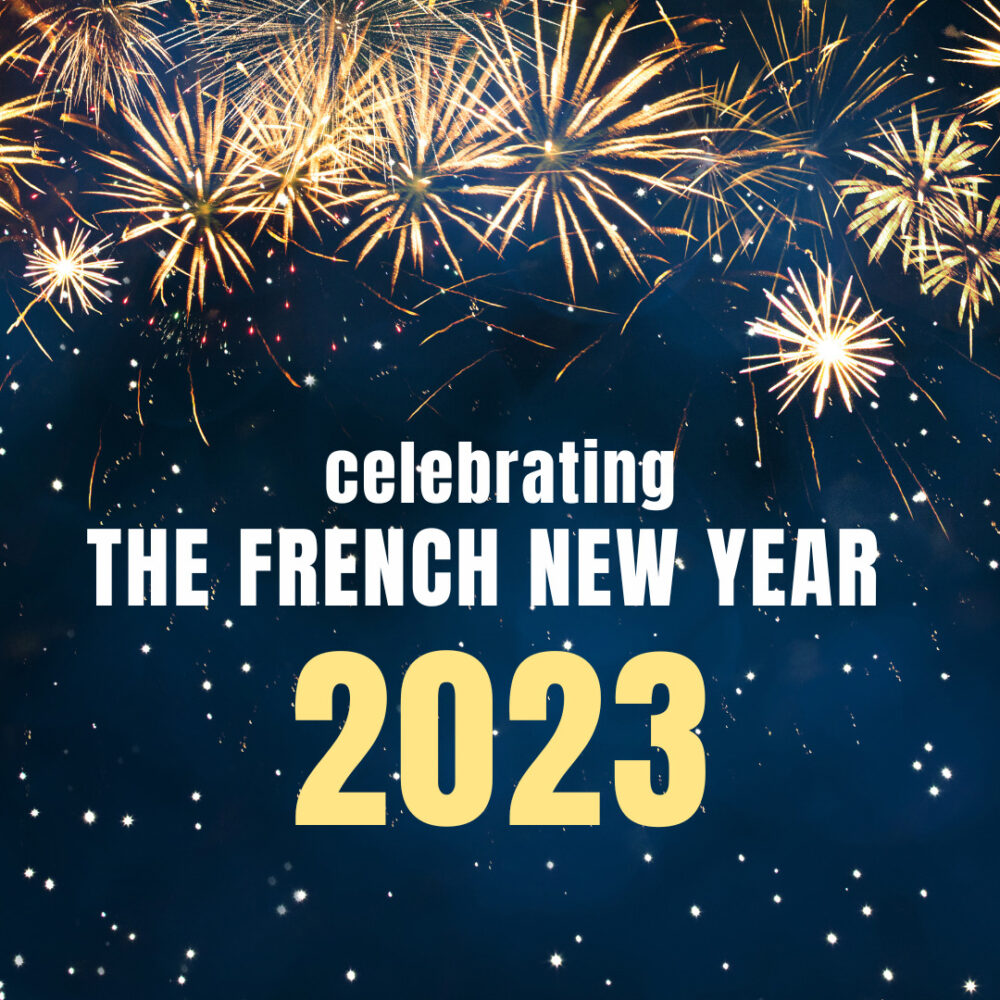Teaching
Are you ready for January 1? French New Year’s customs
Table of Contents
If you’re looking for ways to celebrate the New Year in the French way with your students, here are some French New year’s customs. New Year’s Eve is often called la Saint-Sylvestre due to it being the day that saint is celebrated. The French New Year’s day is called “le jour de l’an.”
While Christmas is very much a family-oriented holiday, French people frequently spend New Year’s Eve with friends. Some will go out for the evening, some will stay home, but no matter where you are celebrating you will probably have a feast! Different regions of France have different specialty dishes. Seafood is particularly popular at French new year feasts – oysters, smoked salmon and more. Almost certainly there will be champagne – ready to toast the new year! While it isn’t possible to share this with students, sparking cider and grape juice can be excellent substitutes.
French New Year practices
Christmas cards aren’t as popular in France as they are in the US. Instead, French people send cards to celebrate the new year with greetings and wishes. This is also the time of year when tips are paid to those who have provided services throughout the year – cleaners, garbage collectors, postal carriers, concierges. These gifts are called les étrennes.
At 8 PM on New Year’s Eve, the French president gives a speech that is carried on the television channels. The speech is called “les voeux presidentielles” and is a chance for the president to share a message of well wishes for the coming year as well as discussing the events of the past year. While it’s hard to imagine people tuning in for a presidential speech on December 31 in the US, it’s quite popular in France. You may want to share a transcript of part or all of the speech with your students and then watch the speech for some listening practice.
As midnight gets closer, people gather to celebrate the changing of the year. There have been fireworks at the Eiffel Tower in past French new year celebrations, but the organizers are moving towards more environmentally friendly light shows. The Arc de Triomphe is also the center of a huge celebration and light show. These shows are always put up on YouTube, so you can share the show with your students.
People will be celebrating in homes and on the streets buy making noise and counting down the seconds to midnight. Midnight is the time to kiss under the mistletoe. While in many countries this is a Christmas custom, it’s a French new year tradition. But don’t think for a minute that you’ll just be kissing one person – it’s customary to go around and exchange la bise with all of your friends and family that are present. While my students definitely wouldn’t want to share la bise, they can still shake hands and wish one another a good new year.
Once the clock has struck midnight, you can officially start wishing people a happy new year – Bonne année. Until the new year officially arrives, you will instead receive wishes for a good end of the year.
But wait…the French New Year isn’t over yet!
Just because it’s January 1 doesn’t mean that you’re done celebrating the French new year. The new year’s “season” continues through January 6, the holiday known as la fête des rois. This holiday celebrates the arrival of the three wise men in Bethlehem. In France it’s celebrated by a special cake, la galette des rois. It’s a pastry filled with almond cream and it’s an entire industry in the first part of January. Each cake hides a “fève” – a bean or a tiny baby doll – and the one who receives the prize is the king or queen for the day.
If your students are Hispanic, they may be familiar with this tradition. It’s very similar to the tradition of la rosca des reyes, also celebrated for the same holiday. The recipe for the cake is quite different but the hidden favor is the same. And if you are familiar with Louisiana traditions, this is similar to the King’s cake for Mardi Gras – although the cake itself is quite different.
Do you need help with a French New Year’s lesson?
Of course, the new year is the time to make plans and resolutions for the future. I use the new year to review the formation of aller + the infinitive to form the future tense and my students make plans for what they hope to accomplish in the New Year.
If you are looking for a quick and easy lesson to share with your students to learn about the holiday, I have a comprehensible input lesson focused on the new year. It includes a PowerPoint and printable version of a reading as well as a resolutions activity and comprehension questions. It’s simple enough to use with your first year second semester students as a class, or with more advanced students independently.



